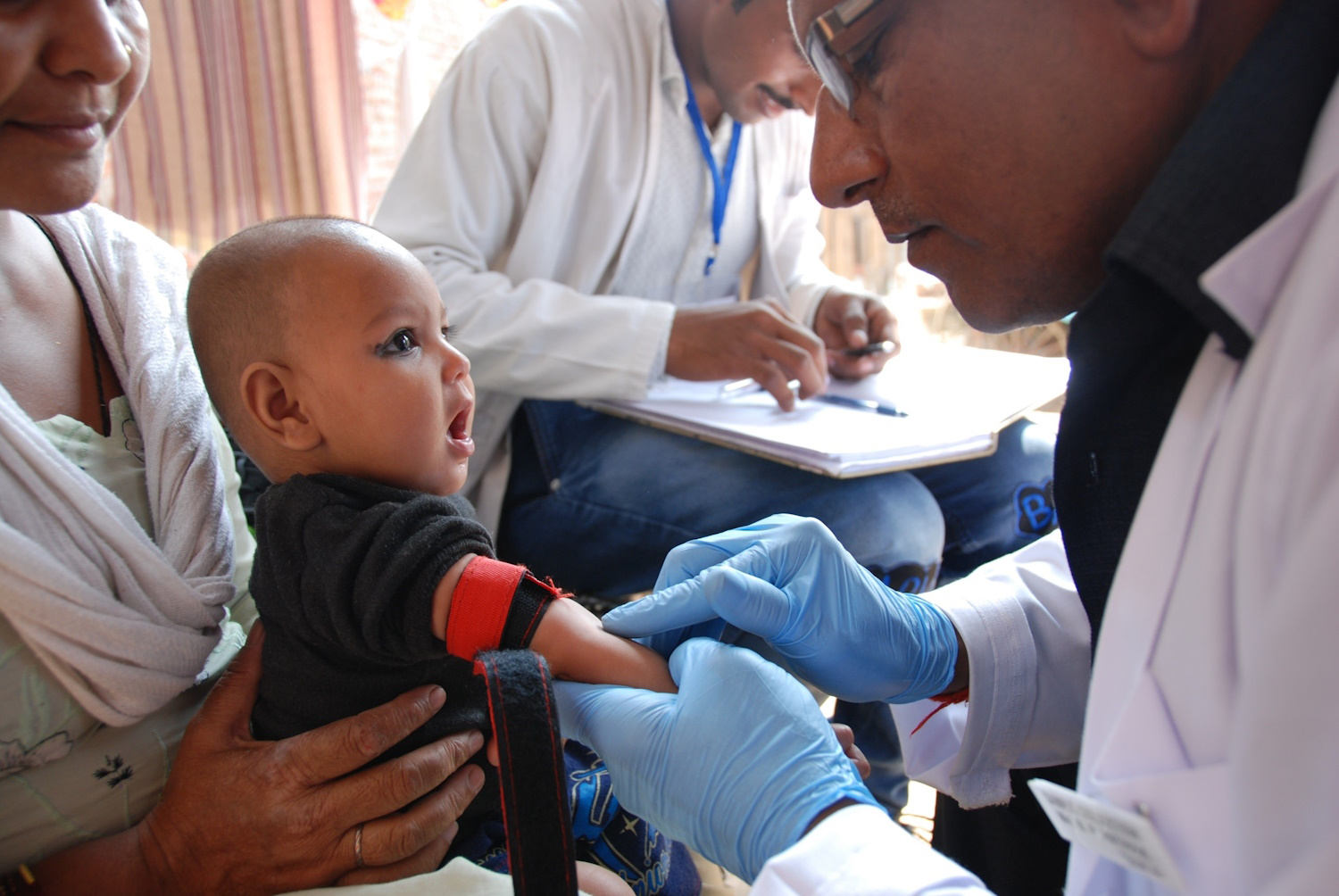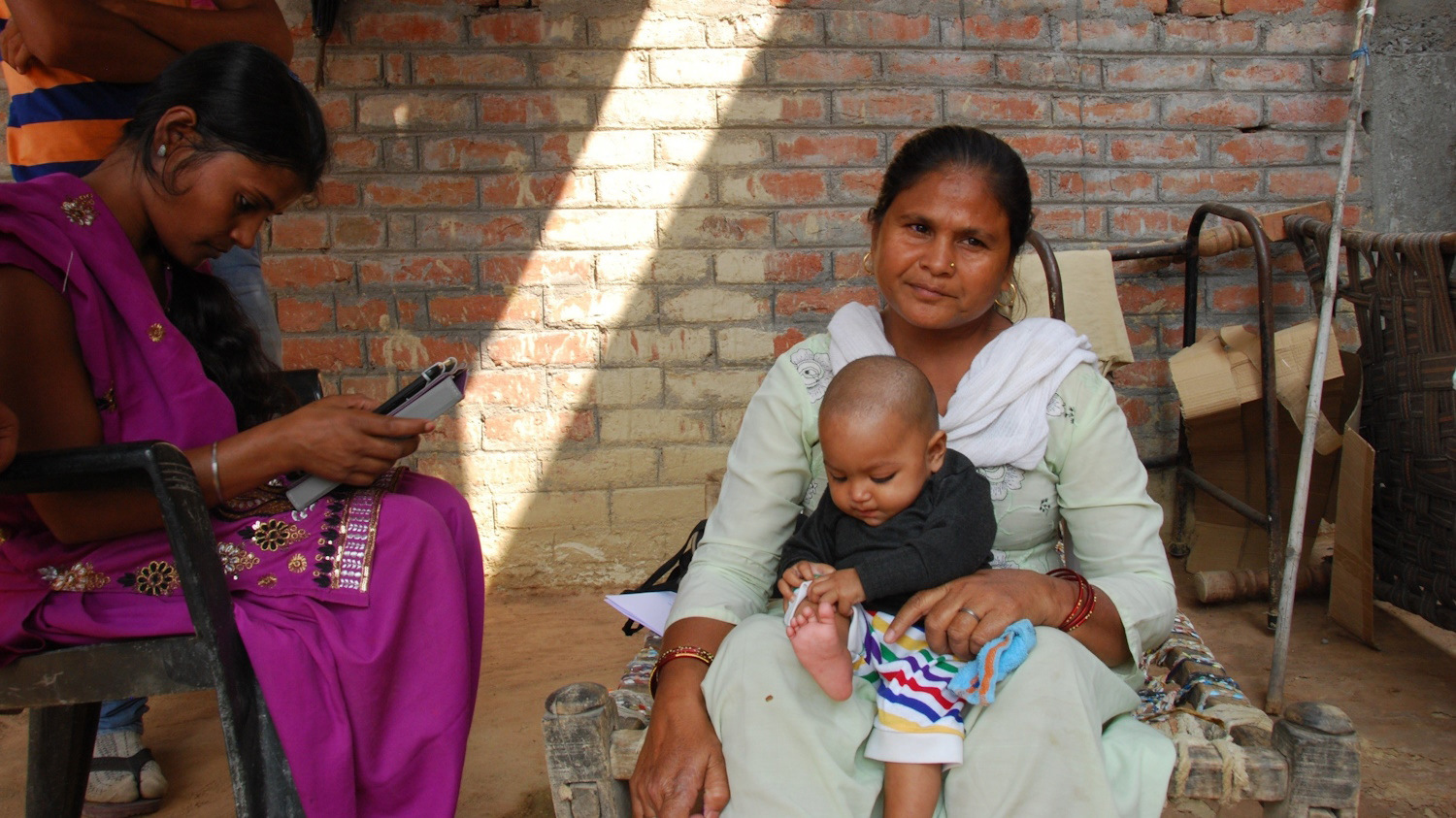
Find out more
The Nutrition and Early Learning (NELI) research group aims to improve the health and development of children and women across the world, particularly by addressing malnutrition, low responsive stimulation, and infectious disease.
February 20, 2024 | Erin Bluvas, bluvase@sc.edu
A recent study led by health promotion, education, and behavior assistant professor Leila Larson and published in Public Health Nutrition has shed more light on the interplay of factors that cause anemia in mothers and children in low- and middle-income countries. With funding from the Bill and Melinda Gates Foundation to the Global Alliance for Improved Nutrition, Larson collaborated with scientists from India and the U.S. to unravel the interrelationships of predictors related to nutrition, environment and genetics in this public health problem.

“Anemia affects 40 percent of children six months to five years of age and 30 percent of non-pregnant women of reproductive age globally,” Larson says. “These rates are particularly high in low- and middle-income countries and have important implications for cognition, school achievement, work productivity and income generation.”
Anemia occurs when the blood does not have enough oxygen in it, according to the National Heart, Lung, and Blood Institute. Importantly, iron deficiency anemia in pregnant women has been associated with preterm birth, low birthweight, and low infant iron stores which affects brain functioning.
It is estimated that 50 percent of anemia is due to iron deficiency. In many settings globally, however, iron supplementation alone has been ineffective in reducing anemia.
In fact, there has been little progress towards achieving global targets for anemia reduction over the past decades. For instance, prevention and treatment of anemia was included in the United Nations Sustainable Development Goals with the intention of reducing anemia by 50 percent in women of reproductive age by 2030. Yet, between 2000 and 2019, global estimates of anemia decreased only slightly from 30.7 to 29.6 percent in non-pregnant women and 40.9 to 36.5 percent in pregnant women.
Prior research has shown that the anemias prevalent in vulnerable groups result from a range of nutritional deficiencies, genetic disorders, and parasitic infections that cause reduced absorption or even blood loss. Yet, more information is needed to understand the role and relationship of direct and indirect factors so that a comprehensive set of etiologies can be addressed that will make future interventions more effective.

Larson’s study involved recruiting non-pregnant women of reproductive age and children under five years of age from 1250 households in rural and urban areas of the Uttar Pradesh state in Northern India. One of the largest states in India, Uttar Pradesh has some of highest rates of malnutrition in the country, with anemia present in 52.3 percent of non-pregnant women of reproductive age and 63.2 percent of children under age five.
Survey data from household interviews, combined with body measurements and blood sample analyses, revealed a complex interaction of factors such as dietary diversity, food insecurity, access to clean water, which influence individuals’ iron, vitamin A, folate, and inflammation status – all of which contribute to anemia.
“Our findings suggest that interventions using experimental study designs that simultaneously address multiple nutritional predictors as well as control of infection and inflammation will have greater potential to reduce the prevalence of anemia,” Larson says. “We also need more studies like this one to more fully understand the causes of anemia and different populations’ potential responses to interventions, so we can design cost-effective solutions to an important public health problem.”
Read the full paper: Predictors of anaemia in mothers and children in Uttar Pradesh, India